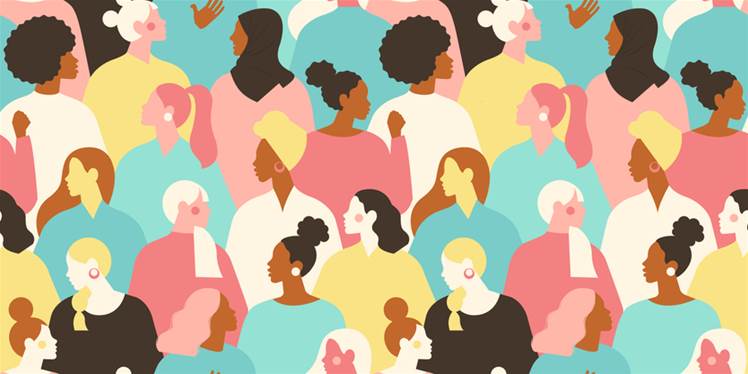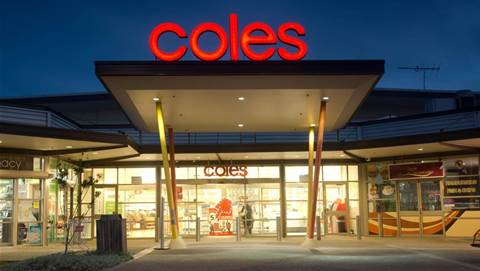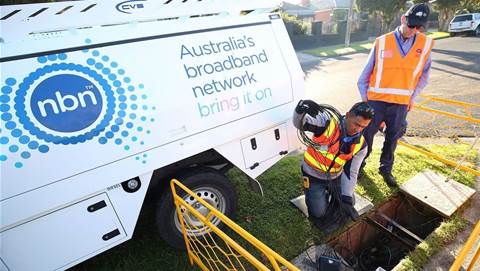McKinsey & Co reports that women-led businesses are 12 percent more likely to meet or exceed expectations for growth.

Yet just 14 percent of respondents say the new business they are most familiar with was led by a woman in its early stages.
Diversity might be perceived as a must-do to appease stakeholders and customers, or in the worst case, a token gesture but the inclusion of diverse thinking has tangible benefits to business. But the data is clear — organisations that tap into diverse talent pools do better than those that don't.
To recognise International Women’s Day 2022, Digital Nation Australia spoke to nine female leaders across a range of industries to find out how diversity of thought and of people has delivered positive business impacts.
Without representation at the board level, new businesses might miss the benefits of diverse leadership. The McKinsey survey revealed that new businesses that have diverse boards — either with gender or racial and ethnic diversity — are more likely to be led by a woman.
A separate report from McKinsey noted 44 percent of companies have three or more women in their C-suite, up from 29 percent of companies in 2015.
“Adding even one woman can make a material difference given the critical role top executives play in shaping the business and culture of their company,” the report authors said.
“Still, the overall representation of women in the C-suite is far from parity. About 1 in 5 C-suite executives is a woman — and only 1 in 25 C-suite executives is a woman of colour.”
Pia Broadley, head of sales APAC at Dropbox calls diversity a “dynamic lever that smart businesses are using to be more innovative”.
She told Digital Nation Australia, “Having diversity and inclusion in a business makes a business 35 percent more likely to outperform the competitors. Having diverse management in a business leads to 19 percent higher revenue. Who doesn't want to make more money and outperform the competitors?”
Diversity helps not only a brand’s image but also its bottom line. Manisha Amin, CEO at Centre for Inclusive Design said when more people from diverse backgrounds are included businesses can reach three to four times their intended audience.
“We know that when we think about diversity, and think about the needs of diverse users, we're actually making better products, services and experiences for everybody,” she said.
Evolution of diversity in Australia
Diversity was not always as prevalent or accepted as it is today, Marcella Lazarus, managing director and founder at Growing Organisations can attest to that, as she has seen the best and worst of acceptance of diversity within the workplace.
Lazarus worked in multiculturalism affairs in the late 1980’s where feminism and new ideas on acceptance and diversity were flourishing. However, John Howard’s Liberal Government in the 1990’s cut the funding for multicultural affairs and suddenly these free-flowing views were seen as taboo in society. It got so bad that Lazarus had to take her multicultural affairs experience off her CV because no one would hire her due to her time working in that department.
“Everybody I knew worked in the sector had to take it off our CVs and say we just did something else. Because it was a no-no, and it just went into the closet for about two decades,” she said.
Thankfully in the 2020s, diversity is becoming more accepted as businesses recognise its value-creation propensity.
Sometimes organisations do not reflect their stakeholders, so changes must be made so that customers can see themselves in a business.
Diversity of thought
Including a wide range of talent in an organisation means a wide range of opinions, thoughts and problem solving. Even asking someone outside the organisation for a thought or suggestion on a process can dramatically change a company’s journey.
Angeline Maronese, managing director ANZ at Rackspace Technology said a client of hers in the insurance sector had an innovation day with their entire organisation, service providers and partners.
In that session the idea of pet insurance came up, from someone outside the business, something that wasn’t popular or well known in Australia at the time.
“That company created that new product and it was quite slow [at the beginning]. But as we all know now, the pet insurance industry is booming, and it was a brilliant idea,” Maronese said.
She said this single idea was a macro change within the organisation.
“Bringing all of those diverse thoughts, backgrounds and people together, they came up with something that was innovative at the time and made a huge difference,” she said.
Inside an organisation’s board, decisions are made all the time, however the speed of which it’s made could determine its success.
If boards come to a decision quickly, it means they haven’t problem solved or been innovative, said Claire Beattie, executive director, asset activations, school infrastructure, department of education NSW and director Women & Girls Emergency Centre Board.
“We haven't really thought about problem solving, we've probably got to a solution way too fast and perhaps that solution will be a band-aid solution,” she said.
This means having people from different backgrounds and genders will bring forth new opinions and thoughts that all-white male boards probably won’t.
“It is about having people on the team who will give considered no’s, who will slow people down so that we can speed up later. Who will ask those wicked questions of why are we doing this? Have we done it before? Do we have lessons learnt from the time we did it before?
“I love when people ask ‘why’ questions, to me diversity of thought and diversity of people makes better delivery,” Beattie added.
Shaking up boards
At the heart of many businesses is the boardroom where executive decisions are made, however, those sitting at the mahogany table need to reflect the world outside the top floor or risk getting left behind.
The latest board diversity statistics from the Australian Institute of Company Directors show 34.2 percent of women make up boards on the ASX 200 and women comprised 41.8 percent of new appointments to the ASX 200 boards last year, a drop from 42.6 percent.
The effort is being made but it is still not enough. Amylia Harris, artistic director at Darlinghurst Theatre Company said organisations need to assess who is not in the room.
“Who has been excluded from your organisation?” she asks.
“Our responsibility as leaders of organisations is to see who's not in the room and find why, then dismantle those barriers.
“I hear time and again, there is not enough seats at this table, make a bigger table.”
Harris said she has a First Nations colleague who when he attends board meetings, drags a spare seat next to him to demonstrate the lack of First Nations representation at boardroom level.
“He says, ‘This seat is empty because there should be more First Nations people sitting at this table. And all I had to do is drag the seat’,” she said.
Lazarus, from Growing Organisations, a firm focused on improving an organisations culture, recalls a time she was asked to consult for an organisation in the disability sector to help breathe new life into the business.
The board was made up of eight people, all white males over the age of 80. When she asked them what the purpose of the business is, they didn’t know.
Lazarus said they brought in people who better reflected the organisation’s members, being several schools for deaf and blind children.
“We brought people on board who came from the same diverse backgrounds that the actual children and their families came from. Suddenly we had this momentum and turned it into a digital-savvy organisation that was providing what the consumers wanted,” she said.
“It was just amazing the turnaround in the organisation in a couple of years. It went from stale and going nowhere to meeting the needs of the consumers that they were targeting.”
Tokenism beware
Diversity needs to be seen in the same lens as risk or revenue for organisations. It cannot be a token gesture, it has to be a new way of working.
Josephine Lanzarone, head of communications & brand APJ at Pluralsight said diversity should not simply be an objective for the HR team to achieve.
“Organisations should work to embed diversity into their culture and ethos to ensure it becomes the norm, and that sustained progress towards making the path forward easier for the next generation is made. It is vital that leaders model this behaviour and keep the conversation on diversity going within their businesses,” she said.
Claire Beattie said organisations need to be careful that they don’t see diversity as “collecting all five Pokémon”.
“Diversity is not always understood as what you can't see you can't be. I'm not an executive director, female. I'm an executive director, I'm a leader,” she said.
“Diversity is misunderstood as ‘you've got one now that's good’. Sometimes you have to wear that and say ‘they've got me here, I'm going to show up and make sure I leave the door open for everyone else, because what they can't see, they can't be’.”
Targets in organisations can be seen as a tokenistic gesture as some people misconstrue them for handouts, when leaders want the role based on merit, Beattie explains.
“While we might have these deliverables, and we want to see more females in infrastructure, or we want to see more diversity in a sector, the target isn't the silver bullet, because that can come across the wrong way to the person who's coming into the job, and to the people who are accepting them into a team,” she said.
Pia Broadley said diversity isn’t a “one and done” project, it needs to be ongoing, holistic and multidimensional.
“It's not a matter of writing policy, doing the training and there you go, Diversity 101. Diversity, equity and inclusion has to be baked into the fabric of the decisions and the processes.
“Diversity becomes a norm when it infiltrates everything we do and it needs to be part of recruitment practices, career progression, conversations, communication, behaviours, leadership, and product development,” she said.
Inclusion must be intersectional
Some women in the industry have bigger issues to focus on than their gender.
Katie McGrath, chief people and culture officer at Seven West Media said being a woman was never her challenge, it was being an orphan, a survivor of domestic and sexual abuse, being a single mother and feeling like she did not belong.
She said this helped her not be so focused on her gender in her career.
“I had many more obstacles to overcome, such as feeling unworthy and not the same as my peers whose lives looked so normal with parents and families,” she said.
“I have since come to realise that my diversity, my differences are exactly the thing that make my viewpoint valuable. No one else is like me, but lots of others have had similar circumstances, so it’s important that I ensure the people who have suffered violence or abuse also are considered and their views and inputs heard.”
Recognising the value of intersectional diversity is critical, especially in driving greater representation in senior leadership.
Amin from Centre for Inclusive Design has experienced a lot of “firsts” in her career both as being the first woman in an organisation and also the first woman of colour.
“I was one of the only women of colour who was not in an admin role in the organisations that I worked in. Times have changed and there are more women in the workplace now than there were when I first started,” she said.
Amin explained there has been evolution, but there is still a long way to go.
“When we look at the top 500 companies, only 8 percent of those companies have women as CEOs. When we look at women who are people of colour as well, we're looking at around one percent. Often we say we need more women in our organisation, or we need more people with disability in our organisation.
“Or they'll say we're starting with disability and then we'll move to LGBTQI+, and then we'll move to women. The reality is we're all diverse, and diversity is Australia,” she said.
Not a band-aid
Diversity will not save a company alone, there are many factors that contribute to a business’ success. Josephine Lanzarone said while it is important there is a representation of diverse people, thought and experiences within their teams, if the environment in which they exist is not inclusive, there will be no impact.
According to Lanzarone, “Diversity means so much more than filling a few vacant spots in the team with people that don’t look exactly like everyone else in the company, it is about embracing change and new approaches.”
“Being open to new ideas and perspectives and most importantly, not accepting that the way we have always done things is the right way. By bringing in people with different backgrounds, a business can reinvigorate itself and create new avenues for growth and success.”
Lanzarone said businesses must ensure they are fostering an environment in which, everyone on the team and in the room feels they will be heard, respected and appreciated when contributing in the workplace — without compromise.
Many organisations put immense pressure on themselves when it comes to diversity metrics, but this can often lead to ill-thought-out approaches, which are not strategic, sustainable, or profitable, according to Mahjabeen Zaman, head of investment specialists at Citi Australia.
“In my experience, diversity isn’t about getting it right 100 percent of the time. Diversity is about being committed to the journey and taking steps towards positive change. It is about working together as an organisation, industry, and community to support, educate, and integrate diversity measures that truly benefit your workforce, clients, and communities you serve,” she said.
“It may take time to get it right, but the lessons learned along the way can be invaluable. The critical part is making sure you have measures in place to learn, measure success, and implement needed change.”


_(22).jpg&h=140&w=231&c=1&s=0)
_(20).jpg&h=140&w=231&c=1&s=0)

.png&h=140&w=231&c=1&s=0)





 iTnews Executive Retreat - Security Leaders Edition
iTnews Executive Retreat - Security Leaders Edition












_(1).jpg&h=140&w=231&c=1&s=0)



